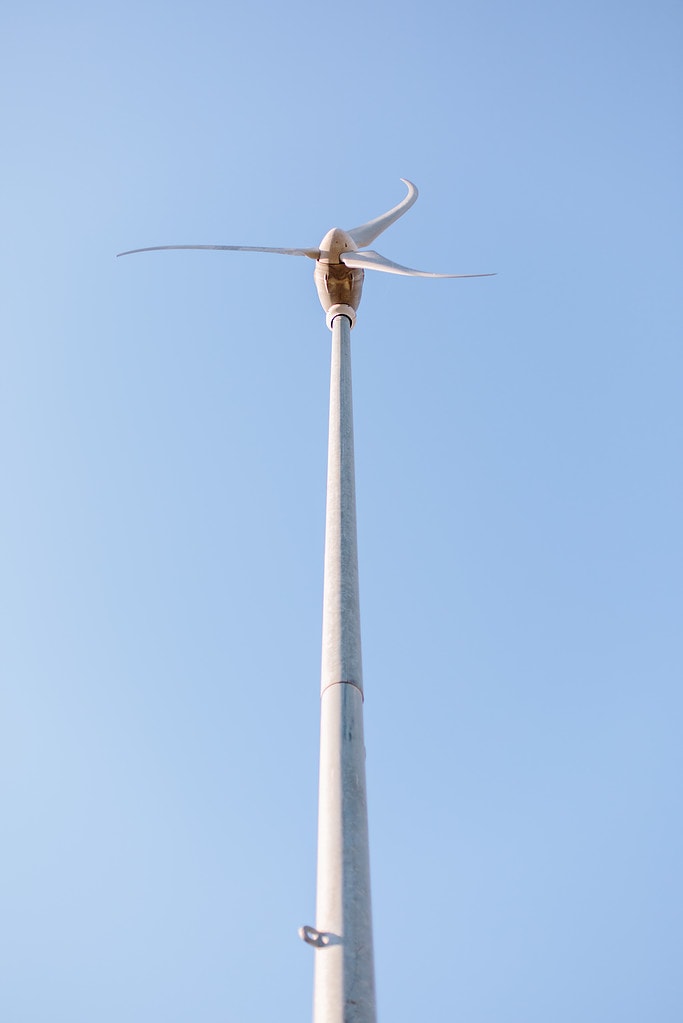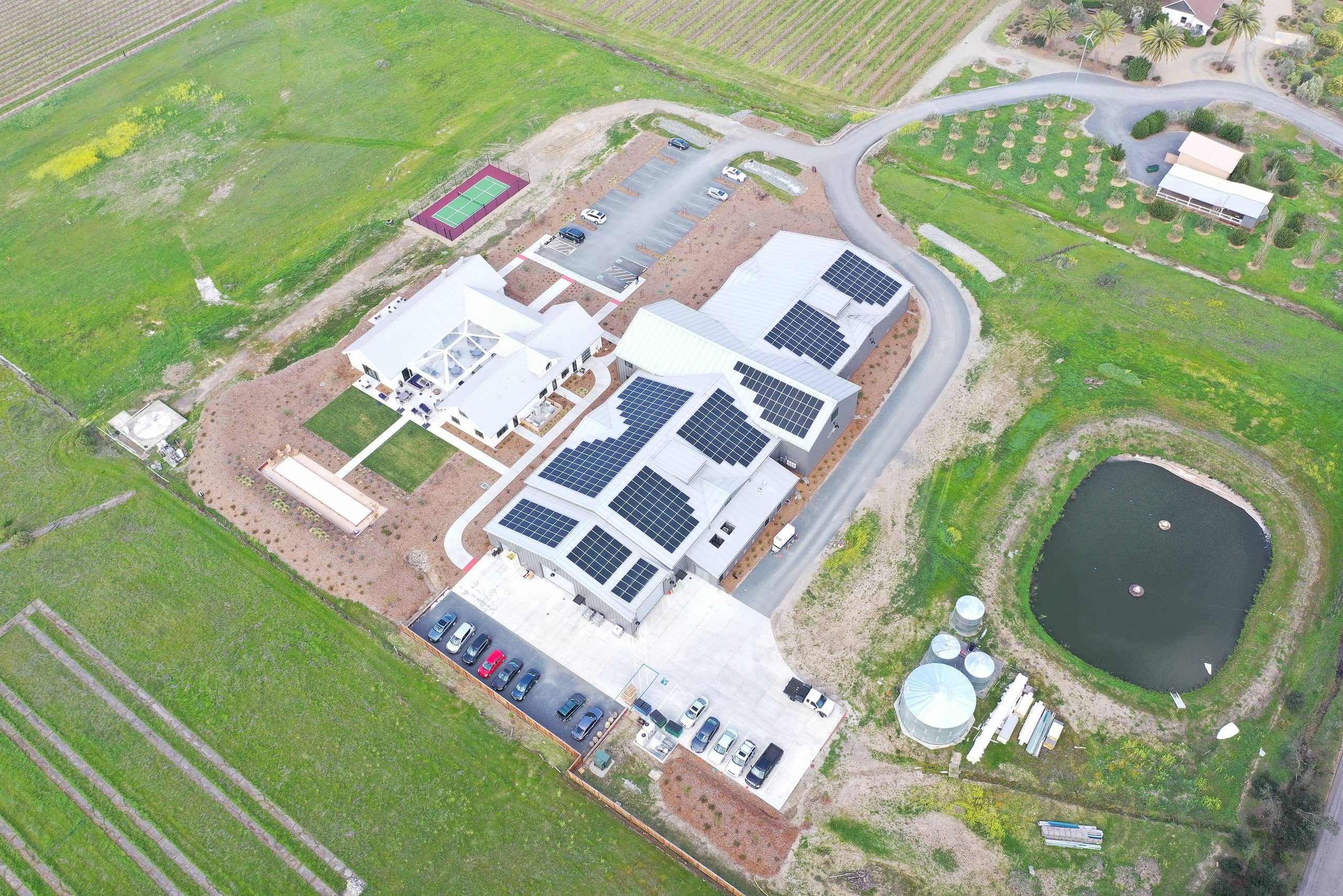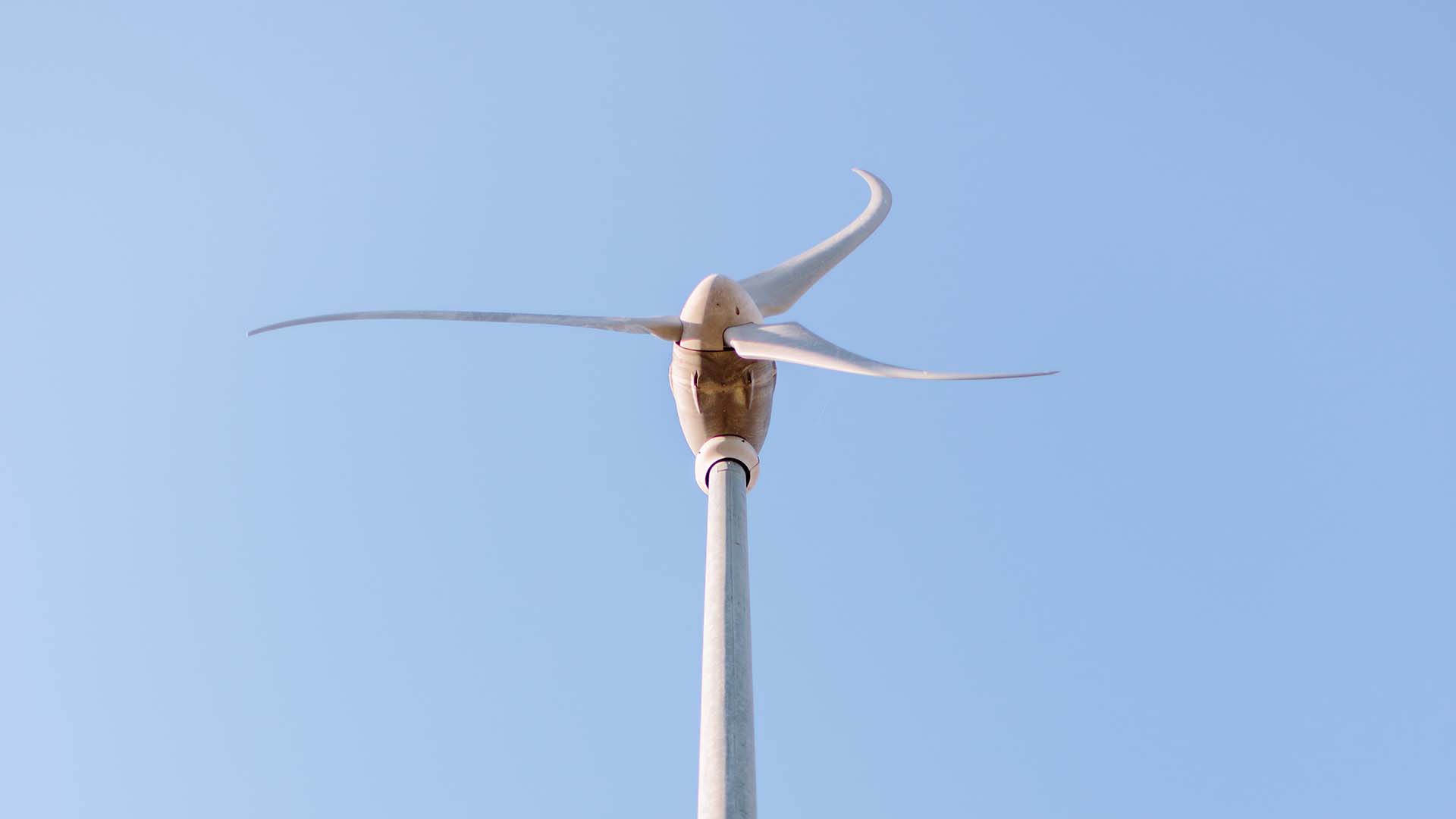Anaba’s origin story is one of nostalgia, passion, and responsibility for our beautiful planet. We begin in 2005 when John Sweazey purchased a 16-acre plot of land in the windy heart of the Carneros region within Sonoma Valley that was home to a 120-year-old farmstead; Anaba’s original tasting room and administrative offices. The strong, sweeping winds reminded him of the Mistral winds that blow through the Rhone Valley triggering memories of his travels in Europe where he first fell in love with all things wine. From the start, John knew sustainability would be an important factor in the decision-making process when it came to all aspects of business, farming, and production. One of the first priorities became his mission to harness the wind by installing a 45-foot sky stream 3.7 wind turbine that would provide clean energy to the estate. Since then, Anaba has grown to include a 167.4 KW DC solar electric system, a state-of-the-art production facility, nature-inspired Vintners House and two estate vineyards, one Chardonnay and one Picpoul Blanc.
At Anaba, every day is Earth Day because we consider how all of our actions affect our environment. Protecting and improving the lands we work on is at the core of our values as it’s a part of every conversation and each decision we make; sustainability is present everywhere you look. Whether it’s behind the scenes or in the public eye, we hope our guests feel comforted and proud to support a business that cares for the environment.
“I never believed there was an alternative to sustainable business practices. It is the right thing to do. As a family-owned winery, I want future generations to be able to enjoy Anaba and the greater community that surround it for many years to come.”
John Sweazey
We invested in green building infrastructure to minimize our waste, water consumption, and energy footprint. Our wastewater is sent to an on-site pond where it is aerated and eventually evaporates. The pond also acts as a bio-habitat for migrating birds and endangered black toads, among other native species. Our wind turbine and solar panels contribute to making Anaba 100% carbon neutral, sometimes we even have enough power harnessed that we can send extra to the grid and support the local community. 43% of a winery’s carbon footprint is from packaging, we are always making moves to improve our packaging to make it more sustainable.


For example, we use lighter-weight glass bottles, we are reducing the use of foil tops on our bottles and we use natural corks that are compostable. In our estate vineyards, we also utilize regenerative agriculture by planting a variety of cover crops such as Crimson Clover, Poppys, Yellow Mustard, and Daikon Radish. Planting cover crops is the best thing for our vineyard as it creates better water retention, the flowers also take carbon and turn it into oxygen. Planting cover crops also brings bugs and good bacteria to the vineyard that help us maintain healthy levels of nitrogen in our soil. Our kitchen utilizes ingredients that are only organic and local, all coming from within 100 miles, to further reduce the use of fossil fuels and our overall carbon footprint. Anaba stays away from contributing to plastic waste as much as possible. Whether in the winery, the tasting room, or our offices, we incorporate glass instead of plastic wherever we can.
“At the end of the day, we want to feel good about the impact we have on the land that we share, the people in our community, and the legacy that we leave behind”
John Sweazey
The time of trying is over, at Anaba there are no sustainability efforts, only actions. Sustainability has been a driving force behind each step that Anaba takes, from the selection of Anaba’s original location to the installation of our wind turbine and solar panels. We will hold ourselves accountable and always be willing to grow and change as new technology and innovation arise. Sustainability is not a fad or an overused marketing tactic used to sway buyers, it’s a way of life, and the only option Anaba sees fit for our community and Mother Earth.
